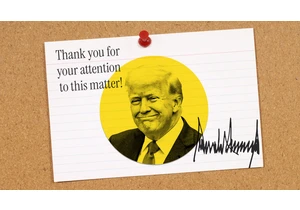Our country’s infrastructure is rapidly deteriorating, and it goes much further than the train derailments in Ohio and Texas. According to the White House, 20% of U.S. highways and major roads, and 45,000 bridges, are in poor condition. Overall, America’s infrastructure gets a barely passing C- grade.
Historically, the infrastructure sector has been slow to adopt new technology, but technology is exactly what we need to fix what is broken. We can modernize the traditional processes that created today’s infrastructure with infrastructure digital twins—virtual, dynamic representations of real-world assets that can point out critical flaws, create efficiencies in maintenance, improve safety, and ultimately save money.
Some municipalities are already using digital twins, and applying them on a broader scale would create opportunities to both renovate and innovate the infrastructure that has become a federal focal point.
Using digital twins to solve these critical real-world problems allows colleagues from around the world to collaborate in real time.
Let’s take a deeper look at how infrastructure digital twins can save money, improve infrastructure, and create a future that is more predictable, sustainable, and resilient.
Reducing planning costs and time
When an engineer or construction manager steps onto the virtual job site, the experience is seamless. Infrastructure digital twins make access to data so versatile that project engineers can work remotely.
Instead of working out of a trailer next to cranes and bulldozers, engineers can make analyses collaboratively from all over the world. Engineers can see what has changed, track progress, and can click on an object to retrieve specifications and other information much quicker than searching a spec sheet.
This digital experience can translate to big savings. According to the Construction Industry Institute, 3D computer models can reduce project costs due to rework by 64% and trim construction schedules by 4%.
Empowering a sustainable future
Fusion power has the potential to revolutionize the effect energy consumption has on the environment, because it is carbon-free. The White House recently laid out a vision for fusion power on a commercial scale, and the Infrastructure Investment and Jobs Act (IIJA) includes a $65 billion investment in clean energy transmission, in hopes of alleviating the roughly $70 billion price tag of power outages each year.
The International Thermonuclear Experimental Reactor (ITER) project, a prime example of fusion energy, is being constructed physically in southern France and virtually in all 35 nations that are collaborating on it, including the U.S. The reactor is designed to produce a net energy gain that would provide power for 200,000 homes.
To build the world’s largest fusion reactor, scientists and engineers use digital twins to design a future-proofed mechanism. Experience from within the model rendering informs the next steps of construction. The open platform and collaborative environment of digital twins eases productivity challenges, particularly in an international construction project based on 50 years of research.
The answer is not starting over
The scope of what needs improvement in America’s infrastructure is too great to just start from scratch. As a presidential tour of the East Coast showed, a string of rebuilding projects is where the country will start.
Take for example, an iconic landmark in Minneapolis, Minnesota. Spanning the Mississippi River in downtown Minneapolis, the Stone Arch Bridge is a former railroad bridge-crossing recognized as a National Civil Engineering Landmark. The structure remains an emblematic architectural feature of the cityscape and is one of the most visited destinations in Minnesota.
When bridge rehabilitation was needed, instead of using conventional data collection and inspection methods, the bridge restoration project used a more advanced technology to digitalize the inspection process and model the bridge. Using drones to take measurements, perform inspections, and capture over 13,000 images resulted in the creation of an infrastructure digital twin. The digital twin showed engineers what to fix without crews even having to be on the bridge thereby limiting the bridge closures.
Using infrastructure digital twins can accelerate projects and not only keep them within budget but reduce the costs. Now with the IIJA, funding will be allocated to projects leveraging these digital technologies, further emphasizing the importance of this transition for the industry.
Mike Campbell is the chief product officer at Bentley Systems.
Autentifică-te pentru a adăuga comentarii
Alte posturi din acest grup

The European Commission is coming for “SkinnyTok.”
EU regulators are investigating a recent wave of social media videos that promote extreme thinness and “tough-love” weight loss advice,

The infamous “Am I The A**hole?” subreddit is making its way to the small screen.
Hosted by Jimmy Carr, the new game show for Comedy Central U.K. will feature members of the public appea

Former employees of OpenAI are asking the top law enforcement officers in California and Delaware to s


Microsoft released its annual Work Trend Index report on Tuesday, which argued that 2025 is the year that companies stop simply experimenting with AI and start building it into key missions.

Artificial intelligence has rapidly started finding its place in the workplace, but this year will be remembered as the moment when companies pushed past simply experimenting with AI and started b

As the founder of World Central Kitchen, renowned chef and humanitarian José Andrés has truly mastered the art of leading through crisis. Andrés shares insights from his new book, Change the R
